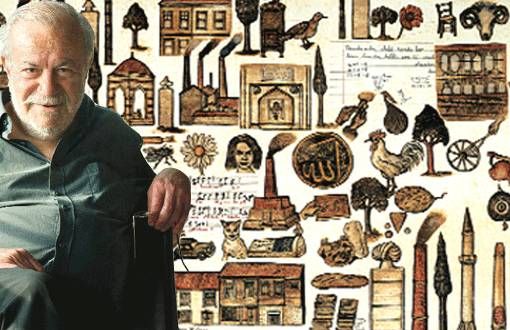The artist depicting thought: Who is Yüksel Arslan?
He was a painter who wanted to embody and portray human thoughts with his works.

Turkish painter. He created a stylistic feature based on Turkish depiction and embroidery traditions and used it in a unique way. He was born in Eyüp, Istanbul. His interest in painting started at a young age. He drew pictures with any material he could get his hands on. After high school, he studied at Istanbul University, Faculty of Letters, Department of Art History for a while. His paintings in his first solo exhibition, which he opened at the Maya Gallery in 1955 with the series Relationship, Behavior, Praise for Troubles, reflect a "search period". He exhibited the Phallisme series, which consists of paintings he made between 1955 and 1961, in Istanbul. These can be described as the "erotic period" works in his art.
Yuksel Arslan was a Turkish Postwar & Contemporary artist who was born in 1933. The artist died in 2017.
He went to France in 1961 and settled in Paris. The series of paintings he named Artures in his exhibitions in Copenhagen and Berlin in 1965 are the products of an "imaginary period". He exhibited these paintings later in France and in Turkey in 1967. The Capital paintings he made between 1968 and 1980 constitute a new stage in his art life, a "socialist period". He has not yet exhibited his latest works. In these paintings, which he called Influences, it is observed that he entered a "compositionist period".
Arslan calls himself a "drawer painter". With his works, people want to embody and portray their thoughts. At first, he was interested in writers such as Marquis de Sade, Nietzsche, Miro, and Klee, later he was inspired by folk arts, Karagöz figures, and Black pencil. He realizes his paintings with a line style that adheres to the tradition of calligraphy and embroidery arts, and the power of expression is in the line. Arslan has been a succinct innovator of the Turkish embroidery tradition. He used the dyes he obtained by mixing various substances with earth dyes. In this context, he researched the dyes in prehistoric cave paintings and was interested in root dyes used in Anatolia.
In his monochrome paintings, he uses color to create a two-dimensional effect, just as an icon artist uses gilding to reflect the non-material.
He never painted nudes, still lives, or landscapes. He sees the human and animal figures he draws not as the purpose of the painting, but as a tool. In addition to his thoughts, he paints the chaos and contradictions of the inner and outer world with a plain, almost poor technique. His painting has a preparatory stage at the intellectual level; thinks first with concepts, then with lines. In this respect, it remains outside the known and customary concept of the painter.
